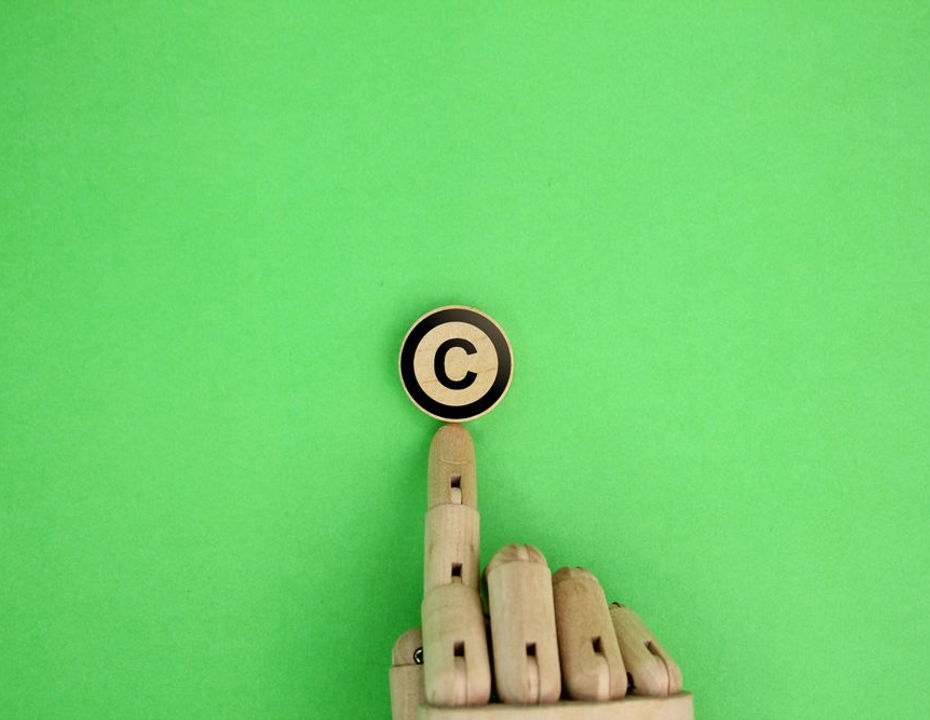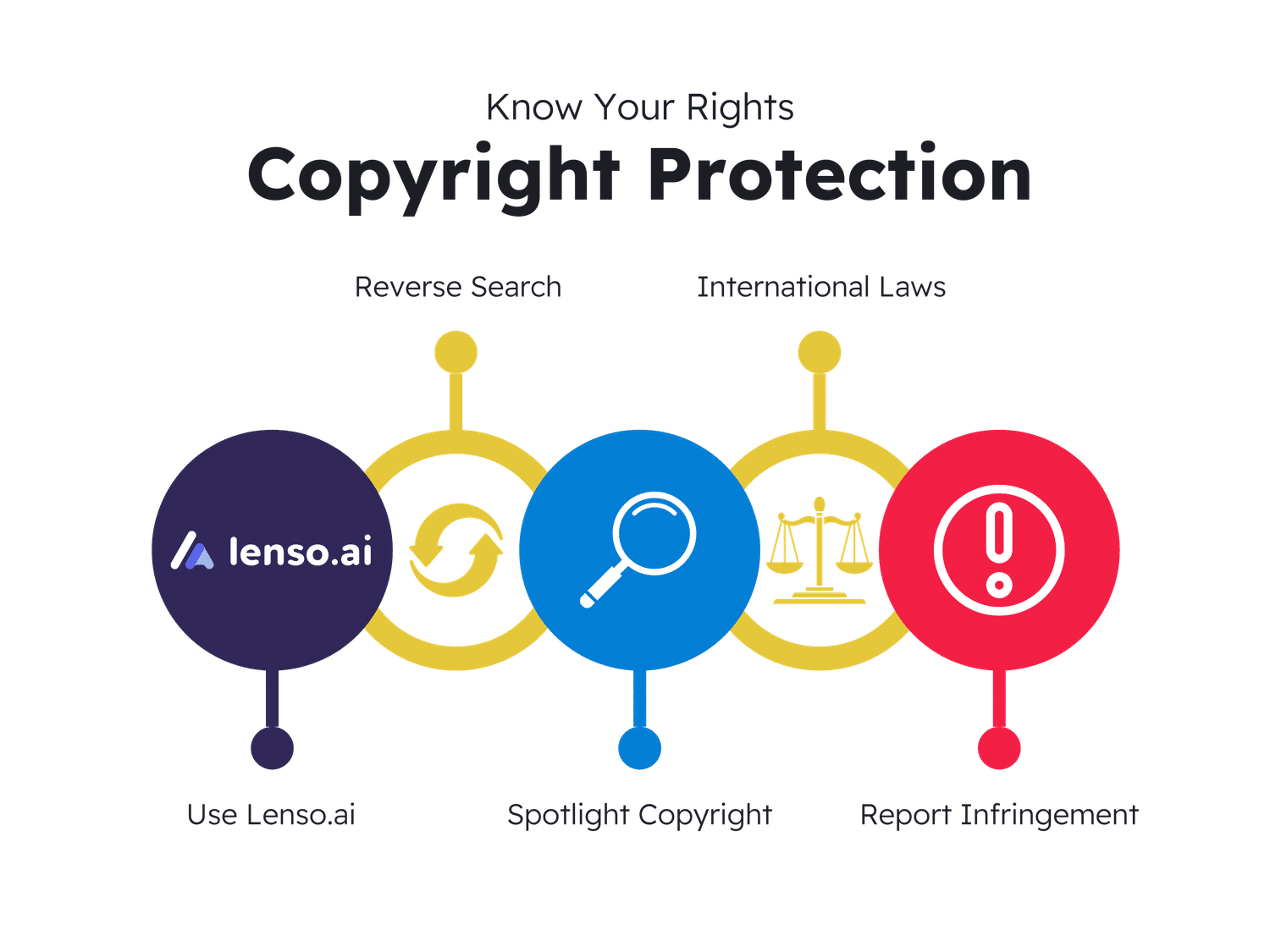
Preview in:
Key Takeaways
This article explores:
- Global copyright landscape: How copyright protection works in different regions
- Tracking plagiarism: How to find your work if you suspect it's been used without permission
- Image ownership: Who owns the copyright to the images you take
- Fair use: Understanding when you can legally use copyrighted material
- Protecting your work: How to deal with your images getting plagiarized.
Are all my images copyright protected?
In the European Union, the United States, and all countries that signed the Berne Convention, copyright arises automatically upon creation. No registration or other formalities are required.
While copyright registration isn't mandatory for protection, some national laws allow it. This can be useful in three key situations:
- Legal proceedings: Registration provides concrete proof of ownership and creation date, which can be crucial in court.
- Business structure: If you're running a creative business structured as an LLC with the best formation services and producing content, copyright protections still apply to your work. In many cases, the LLC itself holds the copyright rather than the individual. This arrangement helps clearly separate your personal assets from business-owned intellectual property — which is especially useful if you ever license, sell, or need to defend your work legally.
- Negotiations: A registered copyright deters potential partners from misappropriating your information during discussions, as it demonstrates the pre-existence of your material.
Best way to find plagiarized work online
Luckily, there are many smart picture finders and copyright AI tools available online. The most effective way to find images that may have been stolen is still through reverse image search.
Using these AI search tools is incredibly easy. Simply upload your image, and the tool will scour the web for matching data. You'll typically receive links to all websites where your image appears, along with similar images.
Spotlighting copyrighted images with Lenso.ai

Lenso.ai simplifies your search for copyrighted images with its built-in AI-powered filter. This advanced technology allows you to easily track down copyrighted content. Choose the “Duplicates” category to find duplicate images.
Lenso.ai goes beyond basic image matching. Its advanced technology excels at recognizing heavily altered images. Even if someone heavily filters your picture, there's a high chance Lenso.ai will still locate it and provide the URL of the infringing image.
With these features, managing your copyrighted works becomes effortless.
Find out how lenso.ai can help you grow your business!
Who is the owner of the image I took?
European Union
In the EU, copyright ownership typically falls to the natural person who creates the work. This means authors and co-authors are usually the first copyright holders.
However, there's an exception for works created by employees during their job duties. In many EU countries, the employee's contract will specify ownership. For example, a university researcher's work might be owned by the university.
United States
In the United States, the photographer who "takes" the photo is typically the author and initial copyright owner. There's one limited exception: "work made for hire." This applies when a photographer creates works within their employment scope (like at a publication) or when a photographer and a commissioning party have a written agreement to create a work for a specific, legal purpose.
Outside of EU and US
The Berne Convention, an international agreement on copyright, sets a minimum copyright protection standard of 50 years after the author's death. This applies in most countries, even if they haven't directly signed the Berne Convention.
Why? The World Trade Organization's TRIPS agreement incorporates the Berne Convention by reference. So, almost every country adheres to at least one of these agreements.
A very small handful of countries might fall outside both Berne and TRIPS. In those cases, it's crucial to research their specific copyright laws before any legal action involving copyrighted works.
Fair use
US copyright law protects creators, but it also allows for certain limitations. A key example is the fair use doctrine (Section 107). This doctrine allows individuals to use copyrighted works for purposes like **criticism, commentary, news reporting, teaching, scholarship, or research **without necessarily seeking permission from the copyright holder.
The four factors are:
- Purpose and Character of Use: Is this for personal use, education, criticism, or commercial gain?
- Nature of the Copyrighted Work: Are you using creative work, factual information, or something else?
- Amount and Substantiality: How much of the original work are you using, and is it the heart of the work?
- Market Impact: Will your use hurt the potential market for the original work?
The EU doesn't have a 'fair use' doctrine like the United States. Instead, EU law offers a list of specific exceptions to copyright limitations granted to rights holders. Across Europe, uses like quotation, criticism, review, caricature, and parody are explicitly allowed.
What to do if you found out your image was stolen?
Here are some steps you can take if someone stole your image and violated copyright law:
- Gather Evidence: Collect any proof you have that shows you are the creator of the image. This could include the original image file, creation date, or any timestamps. ScoreDetect.com allows you to easily timestamp your copyright evidence to the blockchain securely.
- Contact the Infringer: In a polite but firm tone, contact the person or entity using your image without permission. Request them to remove the image and potentially offer them a chance to license it from you if applicable.
- Report the Copyright Infringement: You can report the copyright infringement to the platform where the image is being used. Most platforms have DMCA (Digital Millennium Copyright Act) takedown procedures in place.
If the infringement is significant and you've exhausted other options, consider speaking with a copyright attorney to explore your legal options. In the United States, copyright registration may be required for certain legal actions.
Here are some resources that you might find helpful:
- The United States Copyright Office: https://www.copyright.gov/
- Information on Copyright Registration: https://www.copyright.gov/registration/
Unlike the US, copyright registration isn't mandatory in the European Union to claim ownership, but it can still be a valuable tool as evidence of your copyright ownership.
Here are some helpful resources for Copyright in the EU:
- The European Union Intellectual Property Office (EUIPO): https://www.euipo.europa.eu/
- Your Europe - Copyright Information: https://digital-strategy.ec.europa.eu/en/policies/copyright-legislation
Sources
- Copyright Law of the United States and Related Laws Contained in Tıtle 17 of the United States Code, December 2022
- https://library.owu.edu/Images/Images_FairUse
- https://intellectual-property-helpdesk.ec.europa.eu/
- https://www.copyright.gov/
Continue reading

Guides
3 Best Google Lens alternatives for reverse image search
Tired of using Google Lens, which brings less and less accurate results in its image search? It’s time to try something new: check out the 3 best Google Lens alternatives for reverse image search.

Guides
How Reverse Image Search Can Help Detect Unauthorized Logo Usage
Unauthorized logo usage, such as your logo appearing on counterfeit products or scam sites, can severely damage your brand reputation. Take a look at how reverse image search can help you put a stop to these actions and make your brand identity more secure online.

Guides
AI image search with lenso.ai: How to find and protect your photos online?
Images that were once shared online stopped being safe and protected. There are many situations where images get leaked, and you’re not even aware of it. So how can tools like lenso.ai’s image search help you find and protect your photos online?

Guides
What are filters on lenso.ai and how to use them?
If you visit lenso.ai often, you’ve probably seen the filtering feature. It’s available for all users, and it’s a quick and easy way to refine your image search. In this article, we will explain how to use lenso.ai’s text and domain filters for precise reverse image search.

